Altan T. Metal Forming Handbook
Подождите немного. Документ загружается.


ledeburitic 12% chromium steels (1.2379) and carbides fully comply
with these requirements.
Coatings are applied mainly by specialized companies. This means
that particular attention must be paid to the preparation of dies by the
die manufacturer. Prior to coating, the work surfaces must be free of
grooves and polished to a surface roughness of R
z
< 1 mm. The limit for
optimum coating of internal holes is around l (length) = d (diameter)
when using the PVD technique. With the CVD technique, there are no
known limitations. The limits for the ratio between the diameter D and
thickness H of coated panels in cases where a “deflection” of < 0,02 mm
is required after treatment, are as follows when using the CVD tech-
nique:
D < 7 · H for steels and
D < 15 · H for carbides
and when using the PVD technique
D < 20 · H
It is only possible to coat pre-stressed dies in cases where the insert is
pressed out, coated and pressed in again after coating. In order to pre-
vent the formation of beads, sharp edges must be broken beforehand.
In cases where a mean deviation of the mandrel length L and diameter
D after coating of < 0.01 mm is required, the CVD process should be
used in preference for the following dimensions
L < 10
.
D in the case of steel
L < 15
.
D in the case of carbide
and the PVD process for the length
L < 20
.
D
Reliable improvement in die life, as a result of coating warm forming
dies with the CVD or PVD techniques, has not been demonstrated yet,
classical nitriding and welding-on techniques are generally used to
enhance performance. The problem faced here is that the base materi-
als have lower degrees of hardness compared to the requirements of
501
Die design
Metal Forming Handbook / Schuler (c) Springer-Verlag Berlin Heidelberg 1998

cold forging, and the necessary supporting effect of the substrate mate-
rial is not achieved. Once a continuous increase in the hardness of the
substrate material through to the actual coating has been successfully
achieved, more success can be expected. It may be possible to achieve
this result using plasma nitriding and subsequent coating with CrN or
TiAlN, or through the development of special sandwich coatings.
6.7.4Die closing systems (multiple-action dies)
Recent developments in the field of die closing systems have substan-
tially increased the range of parts that can be produced using the cold
and warm forging methods. Flashless forging of spiders, spherical hubs,
tie rod ends, T-fittings for radiator construction, rotors and parts with
different gearing has only become possible with the development of die
closing systems.
With an additional closing force initiated in the die set, female dies
are closed before the bottom dead center of the slide is reached.
Somewhat later, the material is then formed, flashless, in the closed die
by penetration of the punch. Flashless pressing is only possible if the
pre-form can be completely located in the dies when these are closed.
The closing force itself can be initiated by means of elastomers,
hydraulic systems, or mechanically by the kinematics of the press.
Elastomers offer the advantage that their design is simple and their
spring characteristic can be adjusted within certain limits by altering
the material composition. However, they only permit limited travel.
The elastomers also have to be exchanged periodically. Hydraulic clos-
ing systems generate high closing forces within a minimum of space,
and can thus be positioned adjacent to each other in multiple-station
dies. By adjusting the pressure, a greater closing force range can be cov-
ered. However, their design is more complex, and they call for a num-
ber of safety precautions to protect both the operator as well as the dies.
In modern presses, mechanical initiation of closing motions can be
achieved over a large crank angle range. However, the investment here
is substantially higher than that needed for elastomer or hydraulic sys-
tems.
Figure 6.7.9illustrates the basic layout of a hydraulic closing system
integrated fully into the die. In the provided example, there is a closing
502
Solid forming (Forging)
Metal Forming Handbook / Schuler (c) Springer-Verlag Berlin Heidelberg 1998
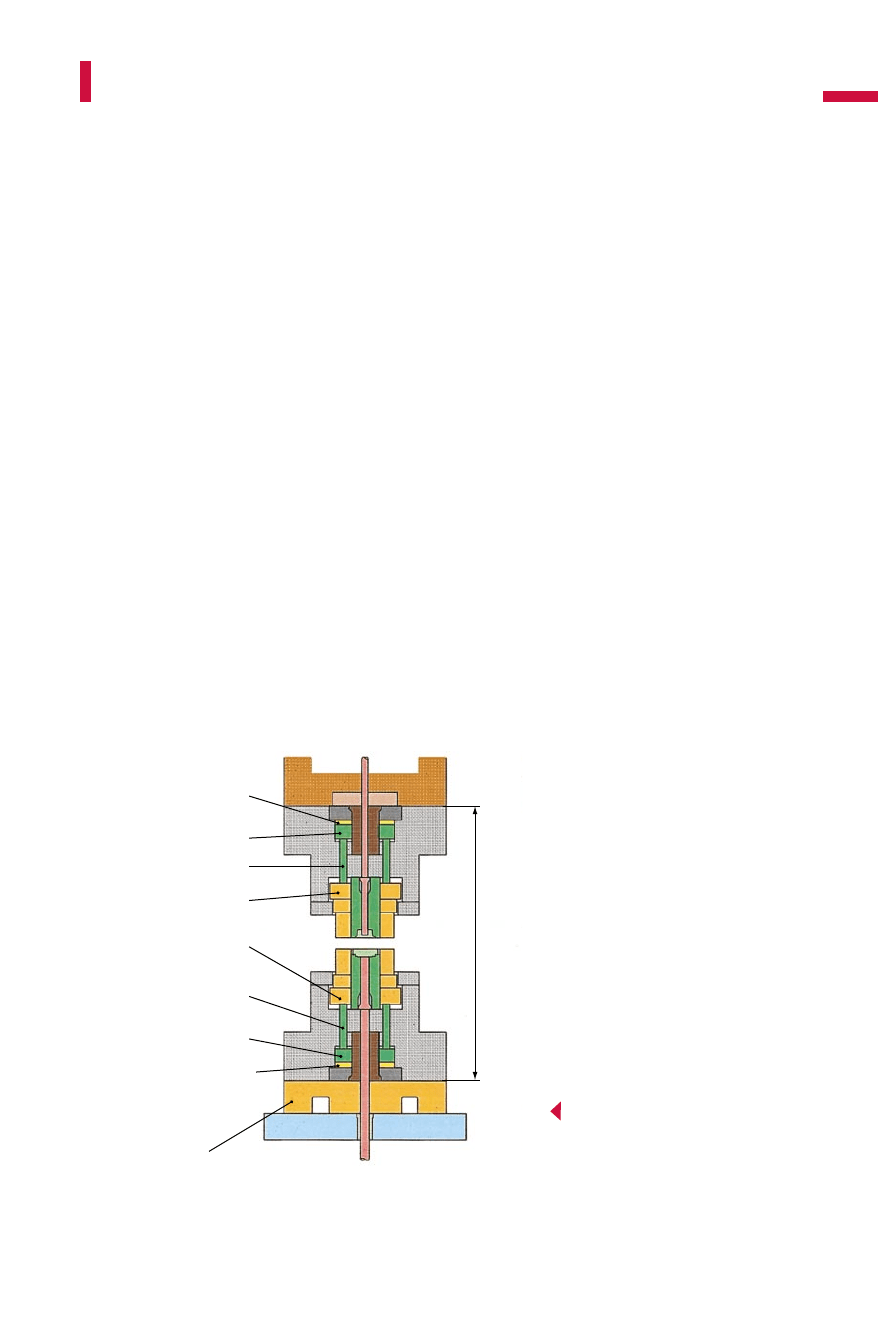
system integrated into both the upper and the lower die. This type is
used predominately in cases where there is only one forging step or
when only one station of a multiple-station die is required to work with
a closing system (cf. Sect. 6.7.1). Typical workpieces produced in this
die include gearing elements which are being formed from pre-formed
blanks (rings, lenses). Closing systems can also be accommodated in
separate neutral plates (Fig. 6.7.10)which always remain in the press
irrespective of the actual die in use. Depending on the die set, mounted
in the press, the closing systems which are currently required can be
activated and connected by means of pressure pins to the female die. A
typical application for this system is the production of tie rod heads
and T-fittings which require up to five closing systems. Additional parts
include inner races of constant velocity joints where an additional
piercing process is required and the grooves, formed in the previous sta-
tion, must maintain this shape accurately during the piercing opera-
tion.
The closing force can be individually adjusted according with the
(annular) piston surfaces. The press forces which are introduced down-
503
Die design
bed
bed
clamping plate
hydraulic cushion
lower die
hydraulic cushion
upper die
annular piston
annular piston
cushion pins
cushion pins
top
advancing die
bottom
daylight
slide
Fig. 6.7.9
Single-station die set with
hydraulic closing system at
the top and bottom
Metal Forming Handbook / Schuler (c) Springer-Verlag Berlin Heidelberg 1998
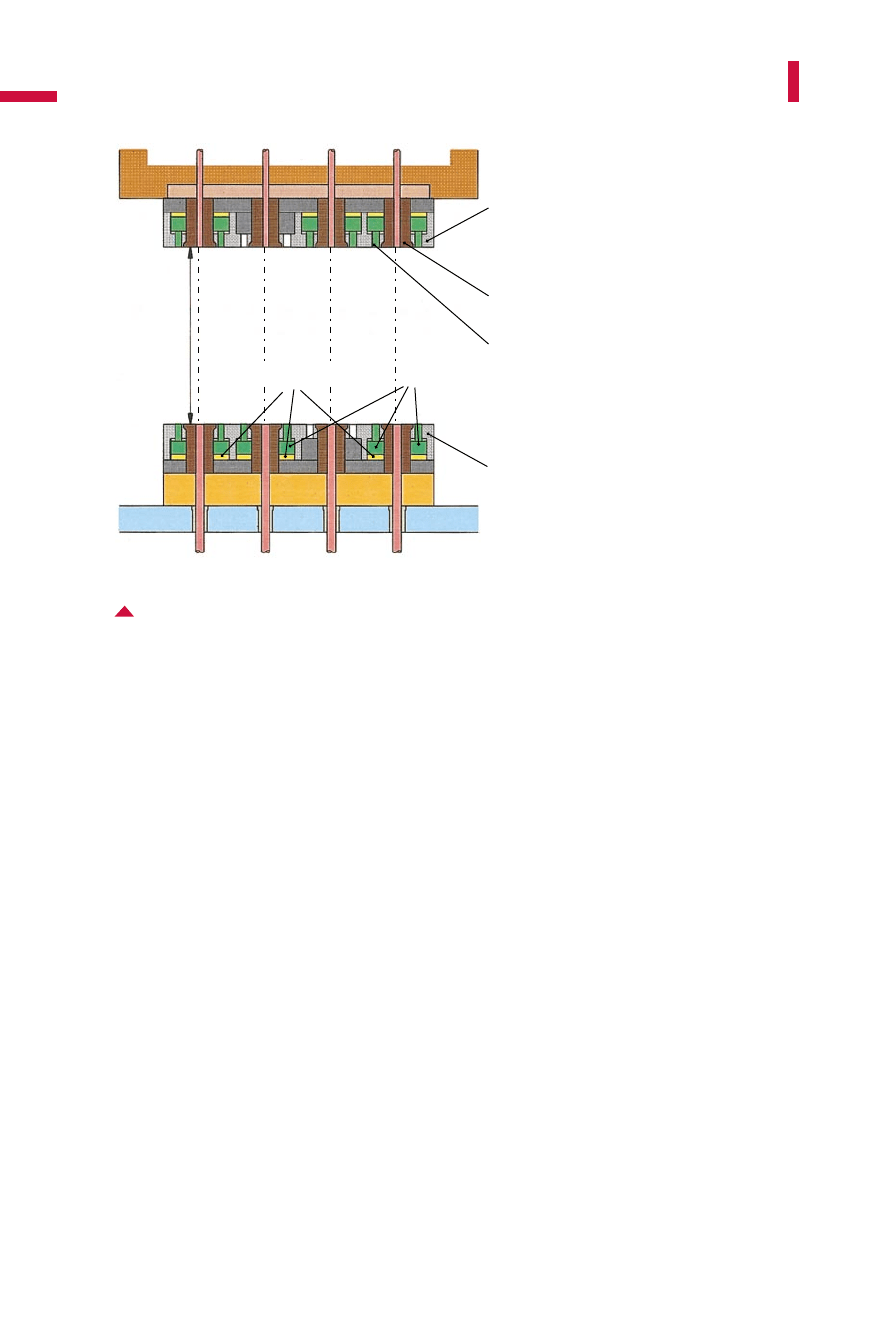
wards into the press bed via a counterpunch are absorbed centrally.
This determines the minimum inside diameter of the annular piston.
As a guideline, the closing force can be estimated to be 0.6 to 0.9 times
the punch load. The required closing force depends on whether a com-
pletely closed (or trapped) die set is being used or forging takes place
through extrusion shoulders into a free space. In the case of complete-
ly closed (trapped) die sets, the closing system also serves to apply an
axial pre-stress on the parting line of the dies, that are subjected to high
loads.
504
Solid forming (Forging)
daylight
bed
slide
oil cushion annular piston
neutral plate
for the closing
system
neutral plate
for the closing
system
counterpunch
cushion pins
Fig. 6.7.10 Multiple-station die set with hydraulic closing systems
at the top and bottom of each station
Metal Forming Handbook / Schuler (c) Springer-Verlag Berlin Heidelberg 1998

6 Solid forming (Forging)
6.8 Presses used for solid forming
6.8.1 Choice of press
The most suitable press for solid forming is selected by taking into
account the following factors:
– part geometry and material,
– batch sizes and
– the user’s existing equipment (e.g. annealing and phosphating lines).
On the basis of this information, process engineers can select the most
economical production method and recommend a suitable press.
As a general rule, mechanical presses are recommended for large pro-
duction lots and batch sizes. The maximum possible part length
depends on the slide stroke and the available ejector stroke. Another
determining factor is the time-motion curve of the press and the auto-
matic feed system. In the case of shaft-type parts, the maximum trans-
port length applies instead of the maximum part length. For the pre-
liminary stages, this dimension is often greater than that of the finished
part. For parts with an internal contour, the penetration depth of the
punch must be taken into consideration. As a rough guideline, the max-
imum possible part or transport length suitable for continuous auto-
matic operation of mechanical presses can be calculated using the fol-
lowing formula:
for parts with internal contour: 0.35 to 0.45 times slide stroke
for shaft-type parts: 0.45 to 0.60 times slide stroke
Metal Forming Handbook / Schuler (c) Springer-Verlag Berlin Heidelberg 1998

Using special devices such as separately driven feed systems with lift-
ing stroke, it is possible to manufacture lengths up to 0.8 times the slide
stroke. In this case, presses operate in the automatic single-stroke mode
at a production output of approx. 15 to 18 parts per minute. In general,
a transfer study is required in setting up automated mechanical presses
in order to ensure a reliable sequence of motions between the slide and
feeding system (cf. Sect. 6.6.2).
In comparison to sheet metal forming, solid forming requires sub-
stantially longer forming strokes in the partial and nominal load range,
and accordingly a greater press energy capacity (cf. Sect. 3.2.1). In addi-
tion, powerful ejector systems are generally used both in the press bed
and the slide (cf. Fig.3.2.12).When using multiple-station dies, a two-
point slide drive is beneficial to enhance the off-center loading capabil-
ity of the press (cf. Fig. 3.1.3).
Regarding production lot sizes, hydraulic pressesoperate at substan-
tially lower speeds than mechanical presses. However, they have
longer slide and ejector strokes as well as high press forces and they are
considerably simpler to implement with a lower investment volume
(cf. Fig. 4.4.2).For these reasons, operation in the single stroke mode is
also economical. The application of hydraulic presses varies consider-
ably. Concerning the operating sequence and necessary press force, the
differences between mechanical and hydraulic systems are minimal.
The working speed of the slide is a particularly important factor in
determining the economical application of hydraulic presses. High
approach and return speeds of approx. 400 to 500mm/s substantially
increase the press cycles (cf. Fig. 3.3.1). Even more important is the
highest possible velocity under load (approx. 40 to 60 mm/s). These
values call for the use of pumps and motors with adequate capacities
(cf. Fig. 3.3.3).
Equally fundamental to economical forming are reliable control sys-
tems using proportional valves for precise control of the slide motion.
Positive stops that can be automatically adjusted are used for sizing and
coining operations.
Figure 6.8.1gives rough guideline values for the required press forces
depending on the formed part, the material and the production
process. Material-dependent differences for the required forming force
are considerably lower for warm and hot forming than for cold forming
(cf. Fig. 6.1.5).
506
Solid forming (Forging)
Metal Forming Handbook / Schuler (c) Springer-Verlag Berlin Heidelberg 1998
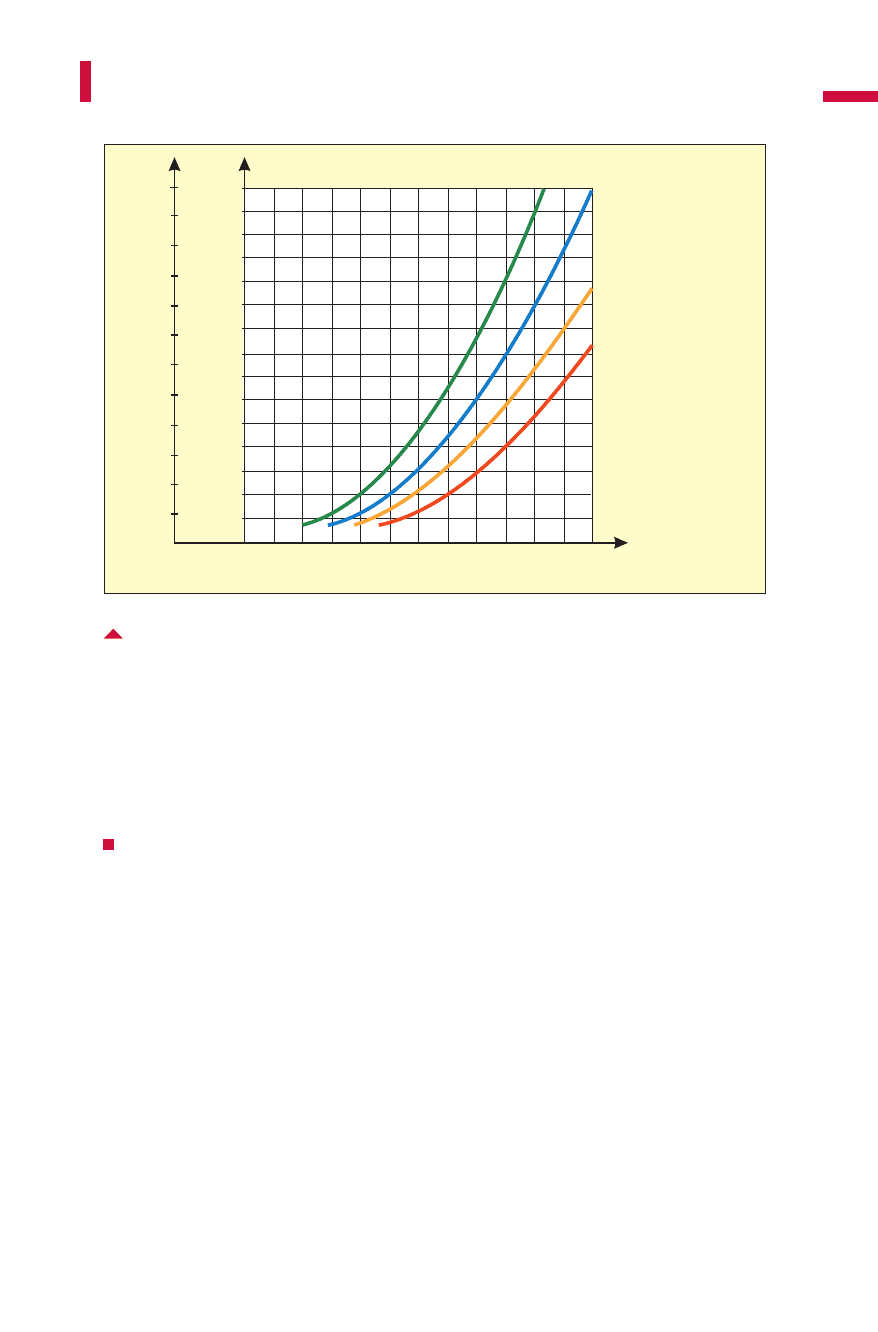
A number of different presses used for solid forming are presented in
the following. For a description of the fundamental principles of press
design, please refer to Sects. 3.1 to 3.3.
6.8.2Mechanical presses
Mechanical presses are used primarily in conjunction with automatic
feed systems for large production series of over 1.5 million parts per
year and batch sizes of more than 10,000 parts. Both vertical and hori-
zontal press designs are used. Hourly production rates, achieved using
vertical systems, range between 1,800 and 3,600, while the correspond-
ing figure for horizontal presses lies between 3,600 and 9,000. The sys-
tems that are most widely used are discussed below.
Knuckle-joint presses with bottom drive
The principle layout of this type of press with nominal press forces from
1,600 kN is described in section 3.2.2(cf. Fig. 3.2.5).Figure 6.8.2illus-
507
Presses used for solid forming
Fig. 6.8.1 Guideline values for press force requirement
pressed part diameter[mm]
10
20 30 40 50 60 70 80 90
100 110 120
1000
2000
2000
3000
4000
4000
5000
6000
6000
7000
8000
8000
9000
10000
10000
11000
12000
12000
13000
14000
20000
22000
24000
18000
16000
14000
15000
42CrMo4cold forming
C10cold forming
C10hot forming
Cf53/100Cr6hot forming
multiple-step forming
press force
press force
single-step forming
[kN]
[kN]
Metal Forming Handbook / Schuler (c) Springer-Verlag Berlin Heidelberg 1998
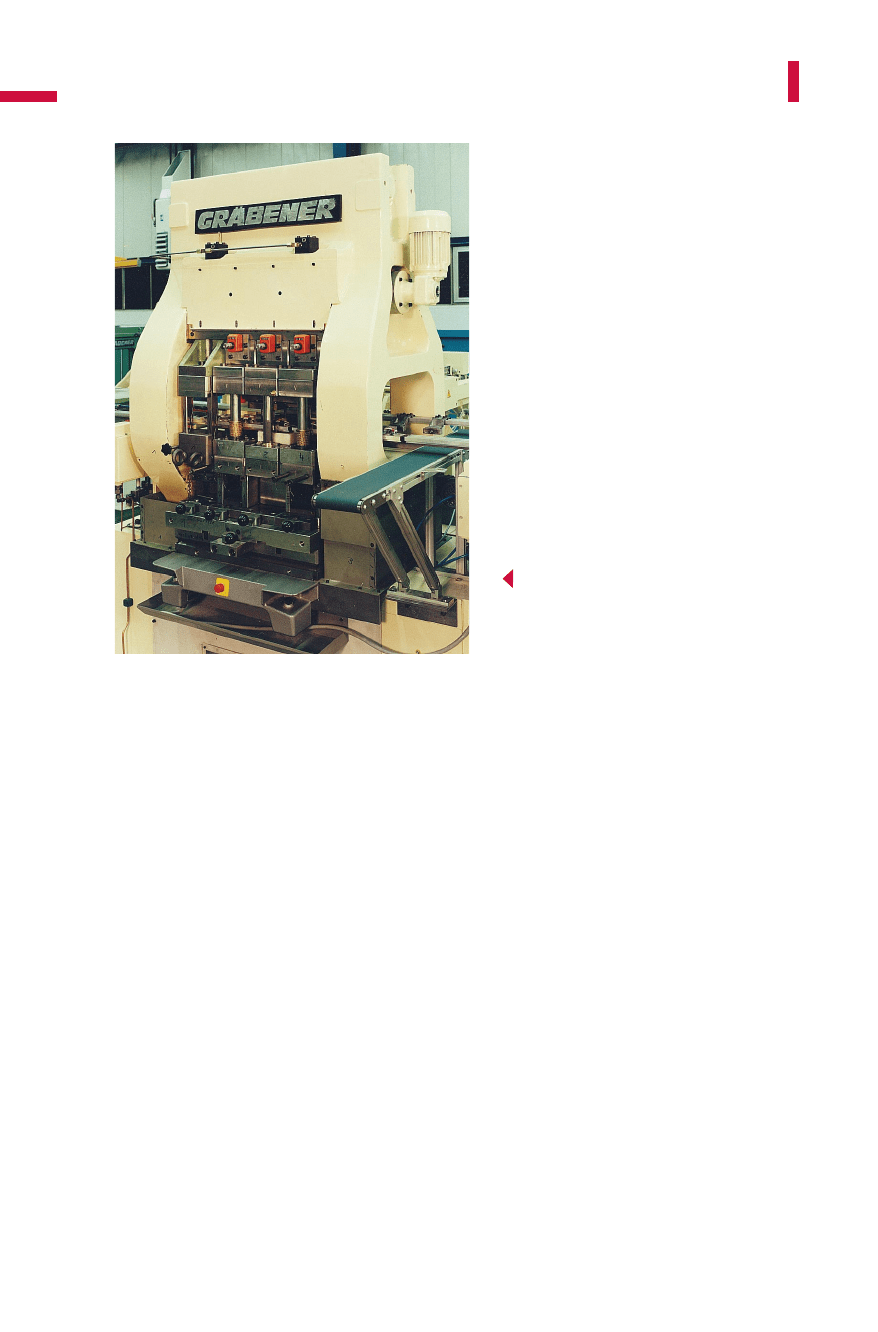
trates a typical press. Here, the press frame moves the upper die up and
down. In the case of single-station dies, part transfer takes place from
the back towards the front (or vice-versa). For multiple-stage dies, the
press frame incorporates lateral openings which provides space for the
rails of the transfer system and for part feed.
One of the benefits offered by this design principle is the low center
of gravity, and the minimal machine weight. These factors result in
lower capital investment compared to presses, offering similar capa-
bilities, but with the top drive. Slide strokes are in the range of 150 to
250mm (in special designs up to 450mm) and they are substantially
larger than those available in coining or blanking presses.
Multiple-station presses with modified top knuckle-joint drive system
The main characteristic of this type of press with rated press forces from
4,000 kN is its modified knuckle-joint drive (cf. sect. 3.2.2). In addition
to the advantages mentioned above, this design principle offers the ben-
efit of a process-adjusted low slide velocity in the work range (Fig. 6.8.3
508
Solid forming (Forging)
Fig. 6.8.2
Knuckle-joint press with bottom drive
(nominal press force 6,300kN, four
stations with transfer feed)
Metal Forming Handbook / Schuler (c) Springer-Verlag Berlin Heidelberg 1998
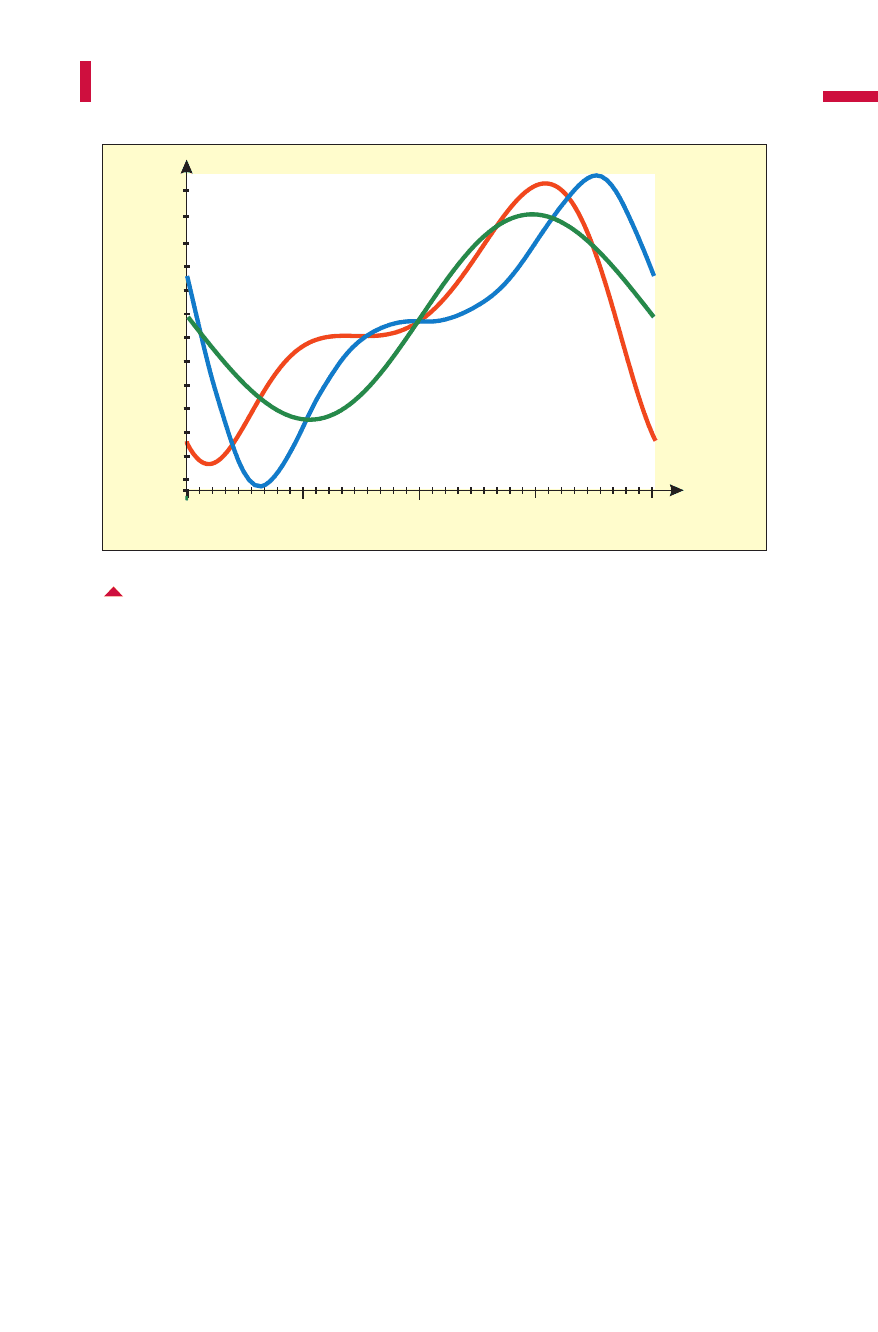
and cf.Fig.3.2.3).This is supplemented by acceleration of the slide
downward and upward to achieve an overall higher stroking rate. As a
result, the velocity of the slide when impacting the workpiece material
is reduced and remains approximately constant during forming. As a
result, the dynamic loads on the press and die are reduced. For extru-
sion processes particularly, this helps to extend the service life of dies
and reduce the stress on the drive system. Another positive side-effect is
a reduction of noise development by about 6 to 8 dB(A).
A further benefit in comparison to conventional drive systems is a
three to four-fold increase in the deformation stroke, with a drive
torque value comparable to that of conventional mechanical presses.
This makes production of press parts, requiring a high level of defor-
mation energy and a large nominal working stroke (> 20 mm) very eco-
nomical (cf. Sect. 3.2.1). The eight-track slide gib operates according to
the “fixed-loose bearing” principle, thus compensating for thermal
expansion in the slide. This makes this press ideally suited for warm
and hot forming (cf. Fig. 3.1.7).The slide stroke ranges between 250 and
400mm (special designs up to 520 mm) (Fig. 6.8.4).
509
Presses used for solid forming
Fig. 6.8.3 Slide velocity curves for mechanical cold forging presses
0°
90°
180°
270°
360°
crankangle[°]
0
-70
-60
-50
-40
-30
-20
-10
10
20
30
40
50
eccentric
drive
modified
knuckle-joint
drive
knuckle-joint
drive
slide velocity [m/min]
slidestroke315mm
strokingrate40/min
Metal Forming Handbook / Schuler (c) Springer-Verlag Berlin Heidelberg 1998
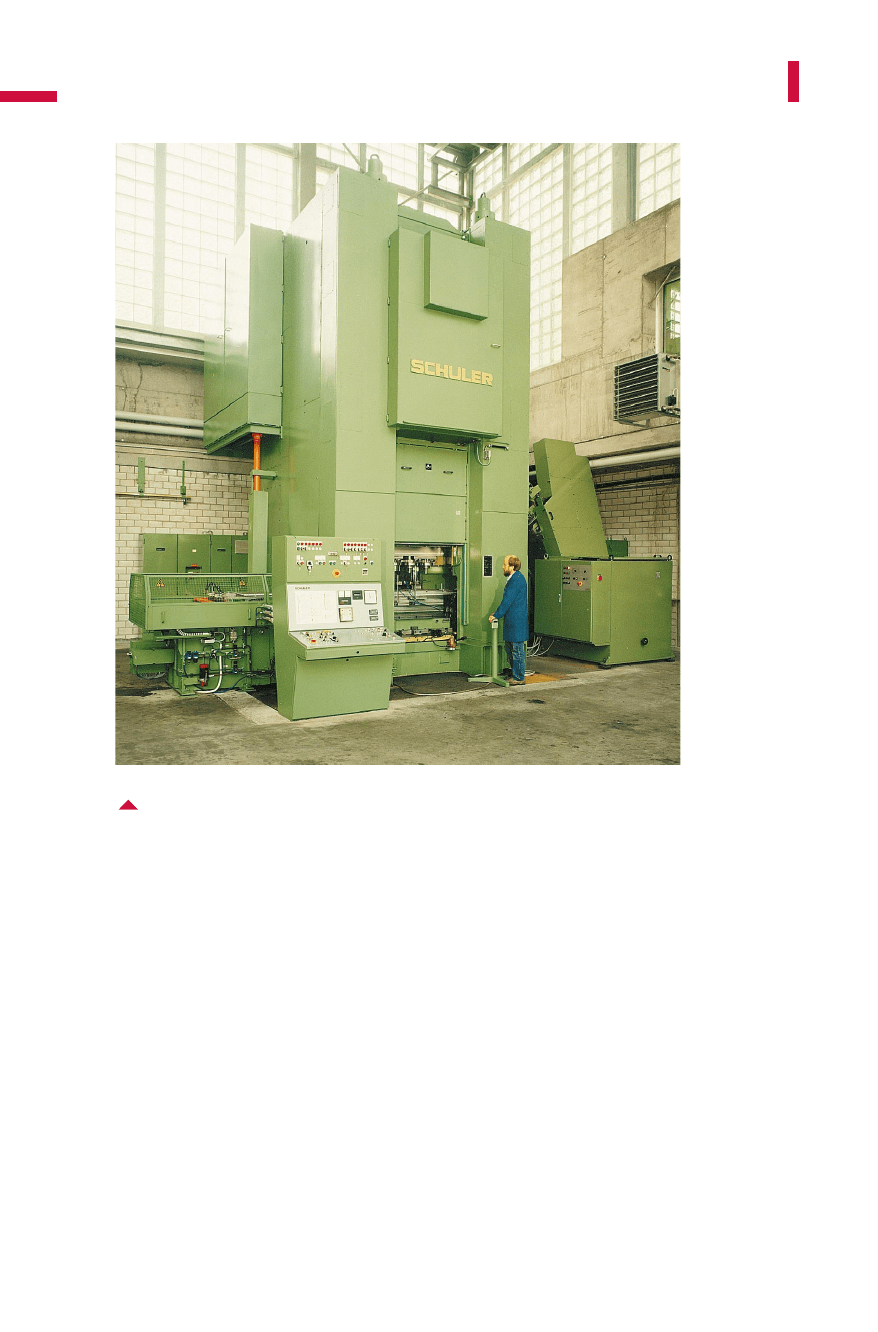
Multiple-station presses with eccentric drive
The main field of application for these presses with nominal press
forces from 6,300 kN lies in warm forming (680 to 820 °C) and auto-
mated flashless forging (Fig. 6.8.5).Due to their large slide stroke of 630
to 800mm, these presses are also ideally suited for cold forming of
long, shaft-type pressed parts. The slide is guided in the same gib sys-
tem as illustrated in Fig. 3.1.7. This guidance concept also permits nar-
row gib clearances in warm and hot forming applications, meaning
that it is no longer necessary to provide for an additional clearance to
compensate for the unavoidable thermal expansion of the slide.
510
Solid forming (Forging)
Fig. 6.8.4 Multiple-station press with modified knuckle-joint top drive
(nominal press force 10,000kN, four stations, loading system and transfer feed)
Metal Forming Handbook / Schuler (c) Springer-Verlag Berlin Heidelberg 1998
